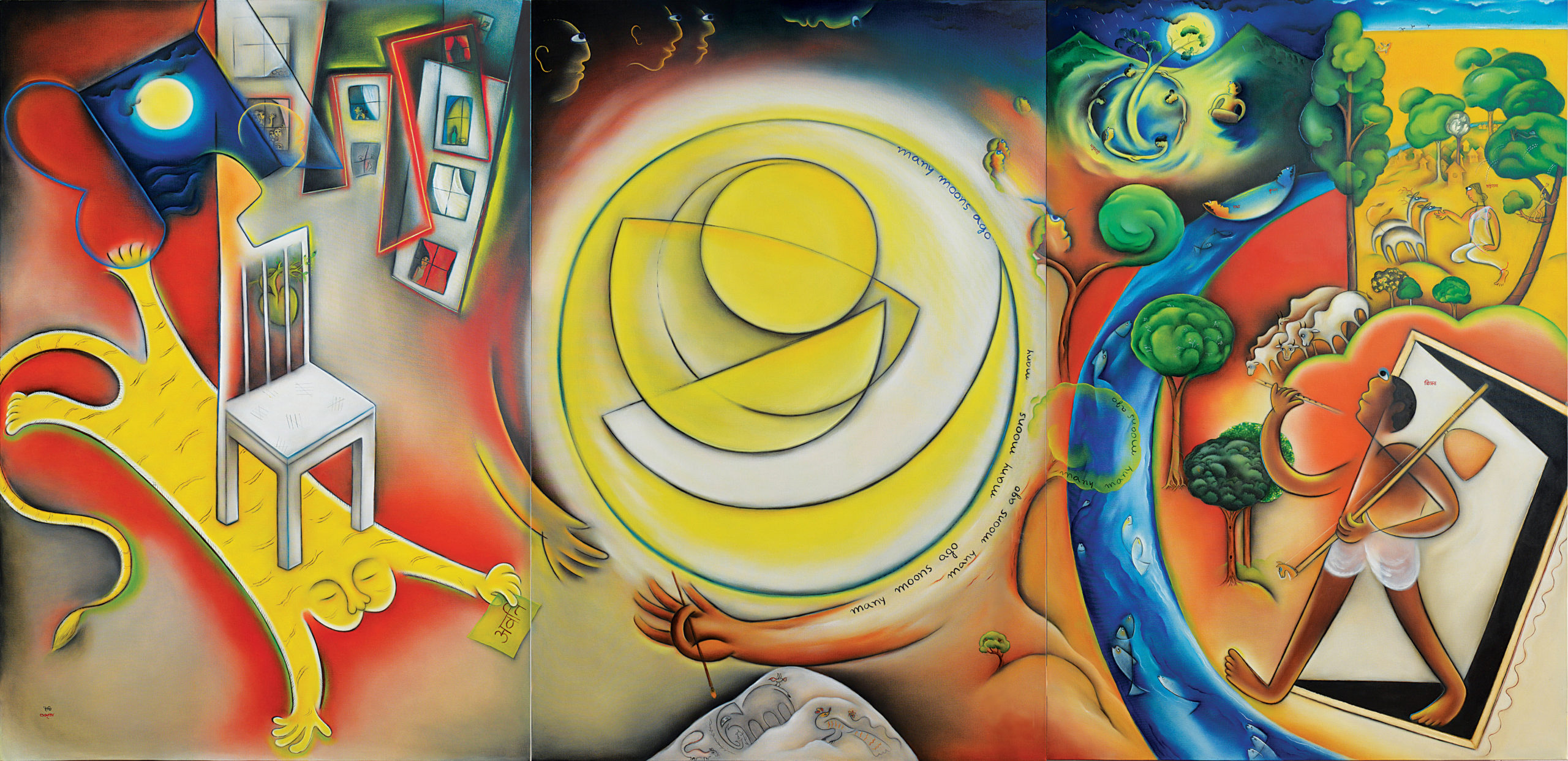
Where Am I, Where Is The Forest! by Amrita Ghosh credit- Perfect Creation
The exhibition depicts the connection between humans and forests and the vital role of human attitude towards nature. In this collection of work, Ghosh tries to showcase this relationship using various socio-cultural, environmental and historical contexts. She uses mediums like oil paint, watercolour, charcoal, pen and ink and mixed media methods to create the artworks.
Amrita Ghosh’s works are greatly influenced by traditional art forms and the creations of Jamini Roy, Binode Behari Mukherjee, Ramkinkar Baij, M.F. Husain, and F.N.Souza among others. Drawing inspirations from literature, her works have a narrative flowing through visual vocabulary.
“I can’t express in words how strongly the literary creations like Rabindranath Tagore’s ‘Religion of The Forest’, Tapovan, Aranya-Devata, Bolai, Chhinnapatrabali; Bibhutibhushan Bandopadhyay’s Aranyak or Pather Panchali; poems of Jibananda Das and Shakti Chattopadhyay have inspired me and how enormous their influence has been in this artistic journey of Aamaar Aranya”, says Ghosh
In ‘My Forest’, she tries to bring out the belongingness between humans and nature.
‘My’ being the possessive form of ‘I’, Ghosh explains the sense of entitlement and desire one feels towards the forest when a person goes into the forest to exploit it. This sense of entitlement and affection is born out of love, gratitude and a sense of duty towards the forest or nature, thus proving the fact that forest and humans belong to each other.
The novel Aryaner Adhikar by Mahashwetha Devi has played a significant role in this creation. The relationship of Birsa Munda with the forest, his motherland and nurture act as a catalyst to Ghosh’s works.
The exhibition covers all kinds of unions between humans and forests. It depicts people living in harmony and unity to protect nature; deforestation and industrialisation destroying the forest; the colonial attitude of people; urbanisation causing Adivasis to move away from their motherland; and the modern attitude that considers forest as an obstacle to progress.
The artist added that she has tried to cover a vast subject through semi-figurative, poetic and imaginative association. The exhibition is open to the public till 7 March at the Visual Arts Gallery.
For more stories that cover the ongoings of Delhi NCR, follow us on:
Instagram: https://www.instagram.com/thepatriot_in/
Twitter: https://twitter.com/Patriot_Delhi
Facebook: https://www.facebook.com/Thepatriotnewsindia
Delhi Police raided a late-night illegal bar in Samaypur Badli, detaining 25 people and seizing…
A rear-end crash near Delhi Haat triggered a blaze that gutted both vehicles, though no…
Court grants probe agency more time as NIA pursues wider links in Red Fort blast…
Featuring works in thread, fabric, performance and digital media, Ski(e)n examines the body as a…
Govt report shows gains in maternal health, with better care access and fewer anaemia cases…
Delhi driver murdered after petty dispute; birthday celebration turns violent, say police